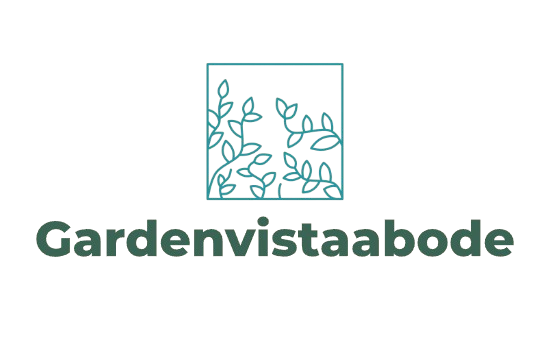In an increasingly interconnected world, the horticulture industry is blossoming beyond local borders. With rising global demand for organic produce, ornamental plants, and sustainable agriculture, exporting your horticulture business offers boundless opportunities. However, tapping into international markets successfully demands more than just high-quality products—it requires a clear strategy, compliance with international standards, and robust marketing approaches.
Here’s a comprehensive guide to help your horticulture business go global effectively and sustainably.
1. Research And Identify Target Markets
Before venturing into international waters, conduct thorough research to identify viable target markets. Consider factors like climate compatibility, trade regulations, consumer preferences, and market demand for specific horticultural products.
For instance, countries with colder climates often import tropical plants or greenhouse vegetables. Meanwhile, European markets may have higher demand for organic-certified produce. Use market data, trade reports, and even reach out to embassies or export councils for insights into potential markets.
Understanding cultural nuances and consumer behavior also gives your brand a competitive edge when entering a new territory.
2. Navigate Export Regulations And Certifications
Compliance is key. Each country has its own set of import regulations, phytosanitary requirements, labeling laws, and quality standards. Getting familiar with them early prevents costly delays or rejections at customs.
You may need certifications such as:
- GlobalG.A.P. (Good Agricultural Practices)
- USDA Organic Certification
- Phytosanitary Certificates
- Fair Trade Certification
Partnering with export consultants or government trade agencies can simplify this often complicated process.

3. Streamline Your Supply Chain
Horticultural products are often perishable and sensitive to temperature and handling. Thus, an efficient, cold-chain-enabled logistics system is essential for maintaining quality during transit.
Consider:
- Temperature-controlled packaging
- Reliable freight forwarding partners
- Real-time shipment tracking
Establish relationships with customs brokers and local distributors in your target market to ensure smooth delivery from port to shelf.
4. Understand Local Sustainability Trends
International markets, especially in Europe and North America, increasingly prioritize environmental sustainability. To stay competitive, align your business with these expectations by adopting sustainable practices such as:
- Water-efficient irrigation
- Eco-friendly packaging
- Reduced pesticide use
- Renewable energy for greenhouses
Highlight these practices in your marketing to appeal to eco-conscious buyers.
5. Build A Strong Brand Identity
Your horticulture brand should tell a compelling story. Are you family-owned? Do you empower local farmers? Is sustainability your cornerstone? These narratives resonate globally and help establish emotional connections with customers.
Your branding materials—logos, product packaging, and digital presence—should reflect your brand story consistently. Professional design and storytelling enhance credibility and attract international partners or distributors.
Incorporate visual content that showcases your farms, processes, and products. A free video editor can help you create visually appealing clips without needing a large marketing budget, perfect for crafting authentic behind-the-scenes stories.
6. Leverage Digital Marketing and E-commerce Platforms
Gone are the days when international expansion required a physical presence. Today, you can use digital marketing and global e-commerce platforms to reach customers across continents.
Strategies include:
- Search Engine Optimization (SEO) for your website
- Social media campaigns showcasing your products
- Content marketing, including blogs and videos about your farming techniques or plant care tips
- Partnerships with online marketplaces like Amazon, Etsy (for small plant retailers), or Alibaba (for bulk buyers)
Engaging visuals can set your brand apart. Utilize video making apps to produce content such as planting tutorials, harvesting timelines, or eco-friendly packaging demonstrations to connect with your audience visually and emotionally.
7. Participate In International Trade Shows
Attending or exhibiting at horticulture trade shows and expos can open doors to networking opportunities with buyers, wholesalers, and distributors from around the globe.
Prominent events include:
- IPM Essen (Germany)
- GrowTech (Turkey)
- HortEx Vietnam
- GreenTech (Netherlands)
These platforms not only boost brand visibility but also offer insights into competitor strategies and industry innovations.
Prepare printed catalogs, sample kits, and product demonstrations to leave a lasting impression on potential clients or partners.

8. Localize Your Approach
What works in one market might not resonate in another. Localization goes beyond translation—it includes adapting packaging, marketing messages, and even product offerings to suit the preferences and cultural sensitivities of each region.
For example, certain flower colors may symbolize mourning in one culture and celebration in another. Or, packaging sizes may vary based on average household sizes or usage habits.
Hiring local representatives or distributors can be a game-changer in understanding and integrating into new markets effectively.
9. Offer Consistent Quality And Customer Support
International customers, particularly wholesale buyers and retailers, value consistency in product quality and delivery timelines. Implementing robust quality control systems is crucial.
Also, offering responsive customer support (ideally in multiple languages) builds trust and encourages repeat business. Transparency in supply chain and clear communication of delivery schedules help manage expectations and reduce conflicts.
10. Explore Strategic Partnerships
Going global doesn’t have to be a solo endeavor. Collaborating with export agencies, agricultural cooperatives, or international buyers can ease the process.
Joint ventures or white-label agreements allow you to share costs, access local expertise, and scale faster. Such partnerships also increase your brand’s credibility in unfamiliar markets.
Conclusion
Exporting green isn’t just about selling plants or produce—it’s about cultivating a sustainable, reputable, and adaptable business model for the global stage. With the right combination of research, strategy, compliance, marketing, and innovation, your horticulture business can thrive in international markets.
Remember, the journey may require effort, investment, and time, but the rewards—expanded reach, increased revenue, and global recognition—are well worth it.

